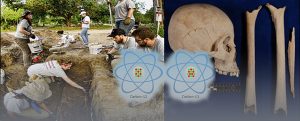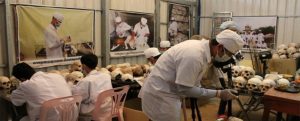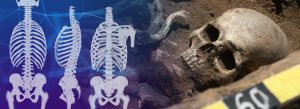Date July 2016 Overview The 2016 NIJ Research and Development Symposium is intended to promote collaboration and enhance knowledge transfer of NIJ-funded research. The NIJ Research and Development (R&D) Program funds both basic or applied R&D projects that will (1)…
Category: Anthropology (page 6)
HHRRC – A Review of Forensic Anthropology in Mexico
← Back to Series The webinar originally occurred on June 2nd, 2017 Duration: 1 hour Overview This webinar provided an overview of the development of forensic anthropology worldwide, but above all in Mexico, and how our team has adapted by…
HHRRC – Stable Isotope Forensics & Unknown Persons Investigations
← Back to Series This webinar originally occurred on May 24, 2017 Duration: 2 hours Overview This webinar discussed applications of stable isotope analysis for predicting region of origin of unidentified border crossers found within the United States. Participants will…
HHRRC – Analysis and Conservation of Human Remains in Cambodia
← Back to Series The webinar originally occurred on May 16th, 2017 Duration: 1 hour Overview This presentation provides an introduction to the work conducted in Cambodia to analyze/preserve human remains from violence committed by the Khmer Rouge. Specifically the…
2015 NIJ Forensic Science R&D Symposium
Overview The Forensic Technology Center of Excellence (FTCOE) assisted the National Institute of Justice (NIJ) in hosting the annual NIJ Forensic Science Research and Development (R&D) Symposium on February 17, 2015 at the American Academy of Forensic Sciences (AAFS) meeting…
HHRRC – Nerve Agent Uptake and Detection in Human Bone
← Back to Series The webinar originally occurred on May 9th, 2017 Duration: 1 hour Overview This presentation discusses experimental tests of a model for drug uptake by human bone and explores how the results may be applied to detect…
2013 R&D: Straight to the Bone: Advances in Forensic Anthropology
Overview This archival portion of the 2013 R&D Seminar Series covers the following presentations: • Improving Sex Estimation from Crania using 3-Dimensional CT Scans – Natalie Shirley • Independent Validation Test of Microscopic Saw Mark Analysis – Jennifer Love • A…
2017 NIJ R&D Series Anthropology & Microbial Forensics
Overview The NIJ Forensic Science Research and Development Symposium was a free and open meeting where attendees learned about NIJ-funded research across a variety of forensic science areas. Afternoon Session I – Anthropology & Microbial Forensics Speakers & Presentations for…
2016 NIJ R&D Series Anthropology & Microbial Forensics
Overview Afternoon Session I: Anthropology & Microbial Forensics The NIJ Research and Development (R&D) Program funds both basic or applied R&D projects that will: (1) Increase the body of knowledge to guide and inform forensic science policy and practice (2)…
Success Story: Creating an International Databank of Skeletal Biomarkers for Human Identification
National Institute of Justice and University of South Florida Date September 2016 Overview According to the Federal Bureau of Investigation’s (FBI’s) National Crime Information Center (NCIC), Missing Person and Unidentified Person Files, there are approximately 13,500 unidentified individual cases in…








